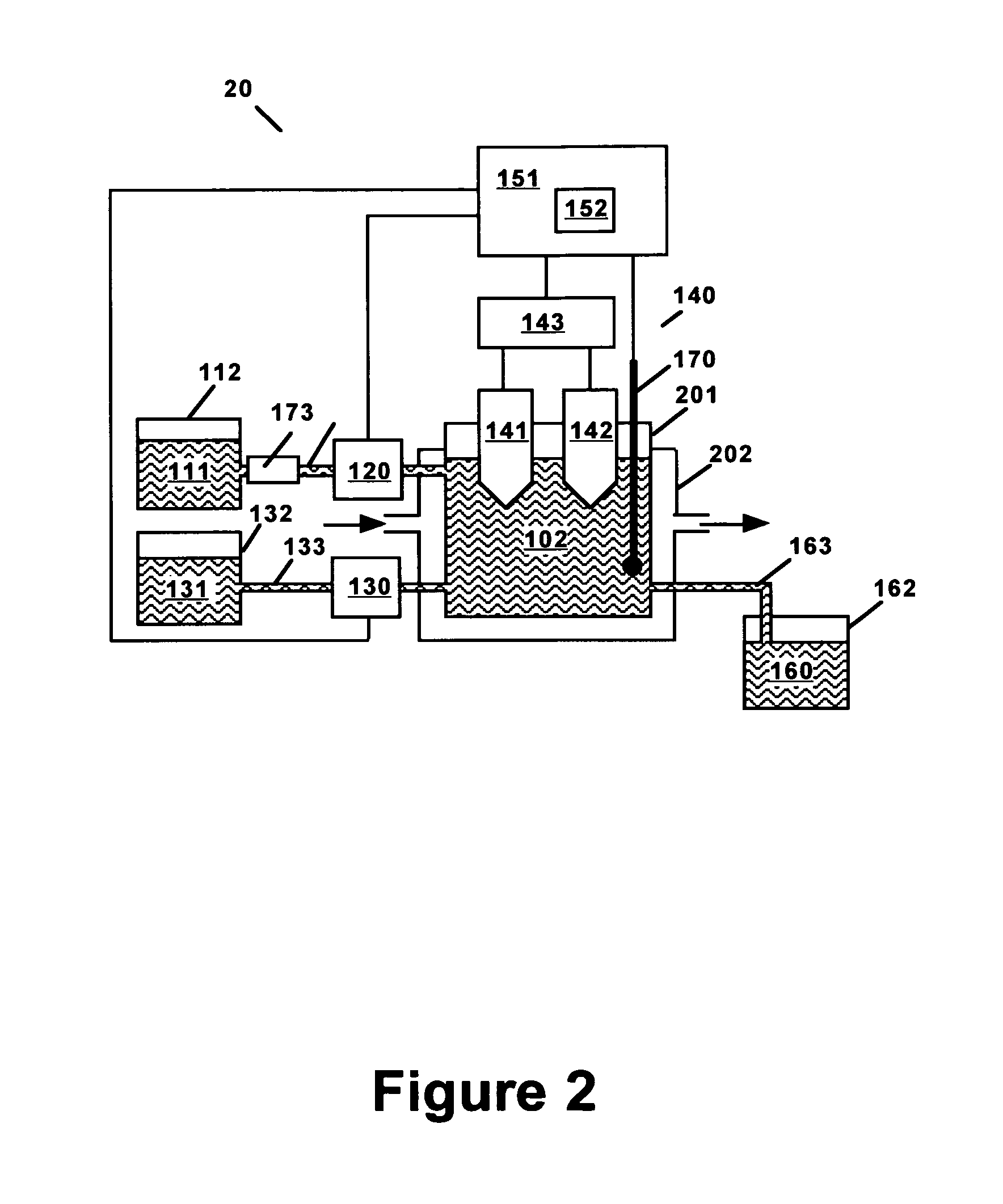Analysis of silicon concentration in phosphoric acid etchant solutions
a technology of phosphoric acid and concentration, applied in the field of semiconductor processing solutions, can solve the problems of large equipment, high cost, complex equipment, etc., and achieve the effects of reducing costs, minimizing and/or correcting for the effects of temperature fluctuations, and shortening measurement tim
- Summary
- Abstract
- Description
- Claims
- Application Information
AI Technical Summary
Benefits of technology
Problems solved by technology
Method used
Image
Examples
Embodiment Construction
[0022]Technical terms used in this document are generally known to those skilled in the art. The term “standard addition” generally means addition of a predetermined quantity of a species to a predetermined volume of a solution (a test solution, for example). The predetermined quantity may be a predetermined weight of the species or a predetermined volume of a standard solution containing the species. A “standard solution” comprises a precisely known concentration of a reagent used for a chemical analysis. The symbol “M” means molar concentration. Calibration data are typically handled as calibration curves or plots but such data may be tabulated and used directly, especially by a computer, and the terms “curve” or “plot” include tabulated data. Water used for solution preparation or dilution is preferably substantially pure water, deionized or distilled water, for example.
[0023]The invention provides a method and an apparatus suitable for determining the silicon concentration in an...
PUM
| Property | Measurement | Unit |
|---|---|---|
| temperature | aaaaa | aaaaa |
| temperature | aaaaa | aaaaa |
| temperature | aaaaa | aaaaa |
Abstract
Description
Claims
Application Information
 Login to View More
Login to View More - R&D
- Intellectual Property
- Life Sciences
- Materials
- Tech Scout
- Unparalleled Data Quality
- Higher Quality Content
- 60% Fewer Hallucinations
Browse by: Latest US Patents, China's latest patents, Technical Efficacy Thesaurus, Application Domain, Technology Topic, Popular Technical Reports.
© 2025 PatSnap. All rights reserved.Legal|Privacy policy|Modern Slavery Act Transparency Statement|Sitemap|About US| Contact US: help@patsnap.com



